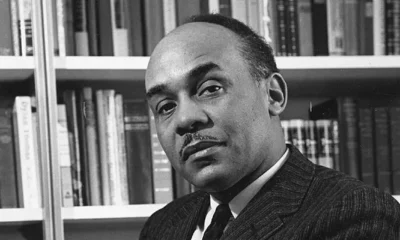Civil War
Removing Artifacts and Restoring Monuments Won’t Rewrite America’s History

The Trump administration is moving forward with an executive order aimed at modifying the representation of historical narratives across national museums and federal properties. This directive involves the removal of specific documents, portraits, and monuments, while also promoting the restoration of others in public spaces.
In March, President Donald Trump described the order as a step toward “restoring truth and sanity to American history by revitalizing key cultural institutions and reversing the spread of divisive ideology.” However, critics argue that the implications of this order belittled the lived experiences and contributions of marginalized communities, particularly Black individuals and women.
The initiative seems to glorify military leaders associated with historical oppression instead of acknowledging the complexities of America’s past. As the nation observes Juneteenth, a holiday recognizing the emancipation of enslaved individuals, the potential impact of this order on public perception and cultural legacy deserves scrutiny.
Some argue that the recent removal of Confederate monuments has failed to close the racial divide that persists across the country. Issues such as systemic racism, disparities in the workplace, and inequitable treatment by law enforcement continue unabated. The ongoing struggle against the educational achievement gap highlights the challenges many Black children face in less-resourced schools.
Removal of these monuments does not erase the troubling history they symbolize. Instances of resurgent white supremacy and instances of racial hatred have only intensified. This raises questions about the intent behind the current administration’s focus on restoring symbols linked to a problematic past.
With a penchant for theatrical actions, the administration appears to prioritize visible symbols of an inglorious history. This renewed focus may inadvertently foster a narrative that these aspects of history should be celebrated rather than examined critically.
The Civil War era deeply threatened the foundation of the United States; thus, it seems misplaced to celebrate aspects of that history openly. Many believe that Confederate symbols belong in museums, not public squares, serving as reminders of a dark chapter that should never be glorified.
The Smithsonian Institution, known for its commitment to education, has included the National Museum of African American History and Culture, which now faces scrutiny from the administration. Proponents argue that keeping Confederate artifacts within museum walls is crucial for acknowledging and learning from America’s historical missteps.
As discussions surrounding the executive order unfold, concerns about the potential alteration of historical narratives remain. The objective should be preserving history for future generations, ensuring they understand both the triumphs and the trials of America’s past.
Neglecting to address the chilling legacy of slavery and racial oppression would not only be a disservice to history but also to those still affected by its ramifications today. A comprehensive understanding of history is vital to inform a more equitable future.
Advocates for truth in historical representation emphasize that it is imperative to confront these issues openly rather than allowing the resurgence of nostalgia for a past defined by oppression. Such confrontations must be grounded in recognition and accountability to ensure meaningful progress.
The current debate over the visibility and significance of Confederate symbols raises essential questions about America’s shared history. As efforts continue to navigate this complex legacy, the focus must remain on creating an inclusive narrative that honors all facets of the American experience.


















